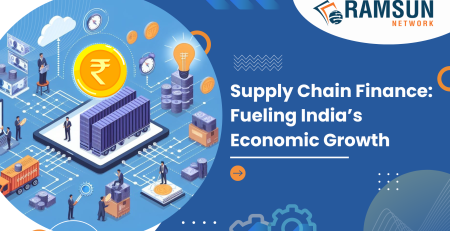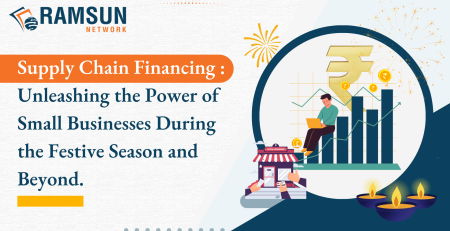Elevating Lending Efficiency: A Lender’s Guide to Loan Origination Systems (LOS)

In the ever-evolving landscape of the finance industry, the loan origination process stands as a linchpin for lenders, offering the keys to unlock financial possibilities for individuals and businesses alike. Whether it’s extending a mortgage or fueling commercial ventures, the journey from application to approval encompasses a sequence of pivotal stages that can make or break a lender’s ability to provide vital support.
Before we dive deeper into the world of loan origination systems (LOS), let’s shed light on a compelling industry statistic that underscores the growing imperative of refining the loan origination process:
The global loan origination software market, valued at $4.8 billion in 2022, is projected to surge to an impressive $12.2 billion by 2032, registering a remarkable CAGR of 10.2% from 2023 to 2032.**
This astounding growth reflects the escalating adoption of advanced LOS technologies by lenders worldwide. Their aim? To supercharge operational efficiency, elevate decision-making capabilities, and provide borrowers with a seamlessly efficient experience. As the financial landscape undergoes constant transformation, embracing the right LOS is not merely an option; it is an indispensable tool for lenders looking to thrive in this dynamic industry.
In this comprehensive guide, we embark on a journey through the intricacies of loan origination, illuminating the significance of a Loan Origination System (LOS) and how it serves as the linchpin in redefining the lending landscape.
In this comprehensive guide, we explore the intricacies of loan origination, emphasizing the importance of a Loan Origination System (LOS) and how it revolutionizes the lending landscape.
Pre-Qualification with the Power of a Loan Origination System (LOS):
Our voyage commences with pre-qualification, a pivotal step where lenders harness the capabilities of a Loan Origination System (LOS) to initiate the application process. This phase is where lenders collect crucial financial data, including income, credit history, and employment status – the bedrock upon which the entire loan evaluation process is constructed.
In today’s digital age, pre-qualification seamlessly unfolds through user-friendly electronic platforms within the LOS, streamlining initial interactions for both lenders and applicants.
Processing and Underwriting:
Once pre-qualification is complete, our journey proceeds to processing and underwriting, where the Loan Origination System (LOS) takes center stage. Here, lenders leverage cutting-edge automation tools, including rule engines and credit scoring APIs, to evaluate applicants’ creditworthiness. These systems employ sophisticated algorithms and historical data to expedite assessments, empowering lenders to make well-informed decisions with swiftness.
Credit Decision Mastery with the Loan Origination System (LOS):
Building on the results of the underwriting process, we reach a pivotal juncture: the credit decision. It’s at this moment that lenders rely on the LOS to capture and retain critical information, ensuring precision and consistency in decision-making.
Quality Checks Streamlined by LOS:
Navigating the intricate web of financial regulations and compliance measures, our voyage diligently conducts quality checks throughout the loan origination process. From document authenticity verification to loan term compliance scrutiny, no detail is too small. Within this labyrinth of standards, a robust LOS shines, leaving no room for oversights and ensuring strict adherence to regulatory frameworks.
Funding the Loan Seamlessly with the LOS:
As the credit decision solidifies and quality checks conclude, the stage is set for loan funding. The LOS continues to play a pivotal role, facilitating seamless communication between lenders and borrowers throughout the funding journey, ensuring accuracy and efficiency.
Underwriting Excellence within the LOS:
A critical element of loan origination is underwriting, especially in the context of mortgage approval. Here, the goal is to secure affordability while minimizing the risk of loan defaults. Lenders thoroughly assess factors such as income, debt-to-income ratio, and credit history. Within the LOS, underwriters paint a vivid picture of the borrower’s financial standing, guiding well-informed decisions.
Cross-Checking and Assessing Fortified by the LOS:
With lenders as stewards of capital, the loan origination process includes meticulous cross-checks and comprehensive KYC (Know Your Customer) procedures. Verification of applicant identity and address, alongside evaluations of repayment capacity, credit scores, age, and employment status, are paramount. The relentless scrutiny ensures that loans are extended exclusively to those with the means to meet their financial obligations.
In conclusion,
Mastering the art of loan origination in the finance industry necessitates harnessing the power of a robust Loan Origination System (LOS). These systems empower lenders to navigate the labyrinth of the loan origination process, ensuring compliance, precision, and a seamless experience for both lenders and borrowers. As the global loan origination software market continues its meteoric rise, the LOS transcends being a tool; it becomes a strategic asset for lenders looking to thrive in an ever-evolving financial landscape.
____________________________________________________________________________
Frequently Asked Questions About Loan Origination [FAQs]:
Q: What specific aspects of the loan application process can be automated within an LOS?
A: LOS systems can automate loan application submission, record keeping, ratio evaluation, document assessment, calculation of maximum loan tenure, and the determination of the maximum loan eligibility amount.
Q: How can LOS help me with record keeping?
A: LOS can help lenders with record keeping in a number of ways, including:
Automated data entry: Many LOS systems can automatically import data from other systems, such as credit bureaus and loan servicing systems. This can save lenders a significant amount of time and effort.
Document management: LOS systems typically include document management features that allow lenders to store, organize, and track all of the documents associated with a loan. This can help lenders to keep their records organized and easily accessible.
Reporting: LOS systems typically offer a variety of reports that can help lenders to track their loan data and identify trends and patterns. This information can be used to improve risk management and customer service.
Q: What is the significance of record keeping in the loan origination process?
A: Record keeping is essential to maintain a detailed history of loan applications, including applicant details, application outcomes, and the progress of requests.
Q: How can record keeping help lenders manage loan applications of various sizes?
A: Record keeping allows lenders to categorize and track loan applications by size, ensuring efficient management and prioritization.
Q: What information is typically recorded about loan applicants in an LOS?
A: An LOS captures data about applicants, including their personal and financial information, making it easier to assess eligibility.
Q: How does an LOS help lenders determine who gets approved and who gets rejected for a loan?
A: LOS systems use recorded applicant data, along with additional information obtained from other sources, based on the submitted data, for evaluation of eligibility criteria, making the approval or rejection process more objective and consistent.
Q: How does an LOS enhance the ease of submitting a loan request for customers?
A: LOS platforms often provide user-friendly interfaces and digital submission options, simplifying the application process for borrowers.
Q: How does the number of assessments affect operational costs in loan origination?
A: The number of assessments directly impacts operational costs. More assessments mean higher costs due to increased labor, time, and risk mitigation efforts. Loan Origination Systems (LOS) help by automating assessments, optimizing processes, and ensuring cost-efficient operations.
Q: How can an LOS reduce operational costs, particularly for small loan ticket sizes with a large number of assessments?
A: Automating LOS decision-making processes for small loan ticket sizes with numerous assessments cuts down on manual labor and lowers operational costs efficiently.
Q: Why is automating decisioning crucial for both small and large assessments?
A: Automating decisioning ensures consistency and accuracy in evaluating loan applications, regardless of their size, while also saving time and resources.
Q: Is manual evaluation of loan applications a viable alternative to automation?
A: Manual evaluation is possible but tends to be a lengthy and resource-intensive process, making automation a more efficient and cost-effective choice.
Q: How do I choose the right LOS for my needs?
A: There are a number of factors to consider when choosing a LOS, such as the size of your business, the types of loans you offer, and your budget. You should also consider the features and functionality that are important to you.








Leave a Reply